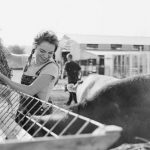Regional and state-specific visa placements to comprise over 40% of permanent skilled migration program
Australia’s appears to be shifting the composition of the Skilled Migration program to promote opportunities for permanent residence in regional areas. By doing so, the number of placements for visas that allow migrants to live in any area of Australia seem to have been reduced. Here’s our insights.
More regional visa opportunities
In 2019/20, at least 49,968 placements have been allocated for permanent skilled visas in regional areas out of the entire 108,682 placements planned for the year’s Skilled Migration program.
The planning level for regional or state/territory nominated migration in 2019/20 includes:
-A total of 25,000 placements for the new Skilled Employer Sponsored Regional (SESR) 494 Visa and the new Skilled Regional (Provisional) 491 Visa from November 2019
-24,968 placements for State/Territory Nominated Visas within the General Skilled Migration program
The above figures do not include 6,862 placements that have been allocated for the Business Innovation and Investment Program for 2019/20. Opportunities for State/Territory Nominated Visas also exist within this program, however the exact number of placements for these have not been specified.
The above visa categories form Australia’s planned ‘State-specific and Regional Migration’ (SSRM) intake for 2019/20.
If all placements are filled according to 2019/20 planning levels, we can expect over 40 percent of Australia’s Skilled Permanent Residence Placements will be allocated to skilled migrants on a Regional or State/Territory Nominated Visa.
Regional and State-specific Migration Trends in Australia
Compared to Australia’s actual regional skilled migration intake levels historically, the planned SSRM percentage for 2019/20 is substantial. The increase demonstrates the magnitude of the Government’s policy shifts towards regional migration.
In 2017/18, SSRM accounted for 36,250 visas granted. This was only 32.6 per cent of Australia’s total skilled migration intake of 111,099 people within the year.
SSRM figures for 2018/19 are yet to be released, however over the past ten years, the SSRM percentage of the total skilled migration program has only reached a peak of 40.3 per cent in 2012-13. Since this peak, the SSRM percentage has generally remained stable at around 30%.
How this may impact skilled visa applicants
To accommodate the increase in the forecast SSRM percentage, less placements will be available for visas that allow a skilled migrant to live and work in any area of Australia in 2019/20.
This is particularly the case for skilled migrants applying for a visa independently without an employer sponsor through the General Skilled Migration program.
Only 18,652 Skilled Independent placements have been planned for 2019/20, compared to 24,247 Skilled Independent Visas granted in 2018-19. Skilled Independent Visas enable migrants to live and work in any area of Australia.
How this may impact businesses
Employers with a need to secure suitably skilled workers for their remote or regional operations, such as businesses in the resources, agricultural and hospitality/tourism industries, may however benefit from the increase in placements for regional migration.
Unfortunately, while the Regional Visa changes will provide more opportunities to engage overseas workers for work in remote areas, the visa process will become more complex.
Employers and visa applicants will need to provide more substantial levels of evidence to make a valid application.
Migration connections made simple
To find out your Australian sponsorship or visa options, we encourage you to contact Immigracious’ Registered Migration Agents on hello@immigracious.com.au or 08 6263 4406.
Source:
Immigracious’ Registered Migration Agents
Minister for Immigration, Citizenship, Migrant Services and Multicultural Affairs Media Release
Migration Program Reports – Department of Home Affairs







Comments